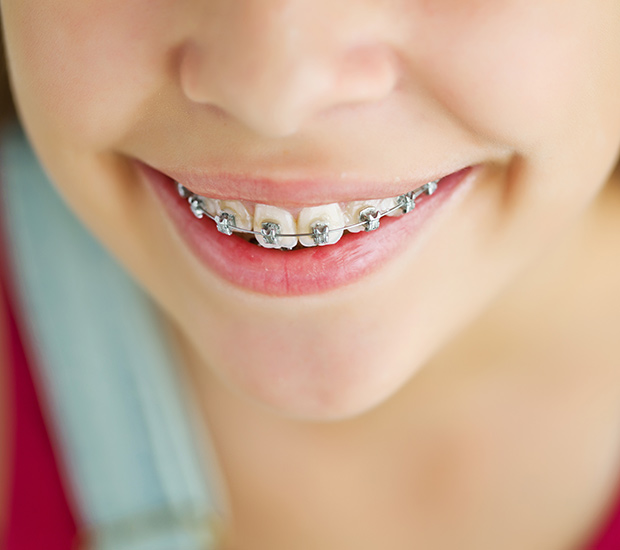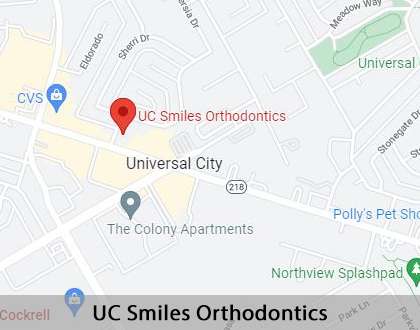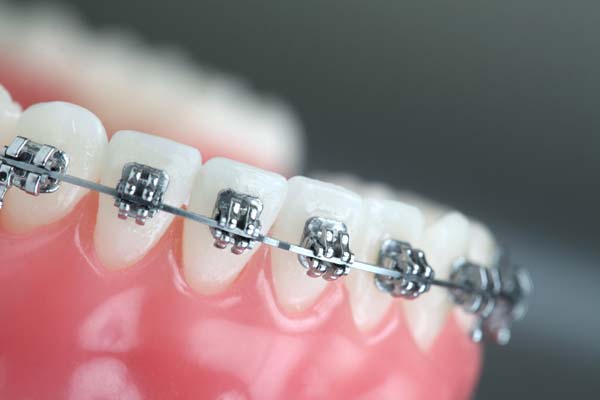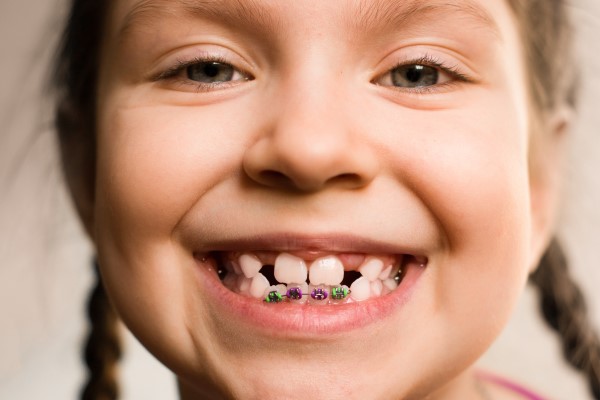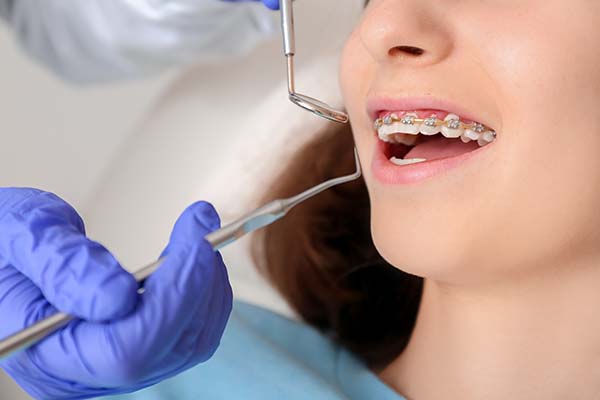Phase Two Orthodontics Universal City, TX
A child may receive Phase One orthodontics during their preteen years. These treatments encourage healthy oral development. Once permanent teeth have erupted, the child will be ready for the next phase. Phase two orthodontics may involve braces, clear aligners, or other alternative treatments. It is not just for children and teens, as adults can receive phase two treatment as well.
Orthodontics is available at UC Smiles Orthodontics in Universal City and the surrounding area. Our team offers a wide range of services for patients of all ages. We are proud to work with a diverse group of families. Call us at (210) 593-7623 to learn more.
When to Begin Orthodontic Treatment
Children should receive an orthodontic evaluation no later than age 7. During this checkup, the dental provider may take measurements or impressions. The team looks for developing orthodontic problems. If a child has a dental issue, the provider may begin Phase One or early interceptive treatment. These treatments aim to resolve problems before permanent teeth shift into place.
During Phase One, the provider may try to adjust the child's jaw size or shape. The team might also expand the arch of upper or lower teeth. Sometimes, the provider also repairs bite problems or jaw misalignments.
Keep in mind that patients cannot receive braces until all their permanent teeth are in place. During Phase One, the dental provider tries to streamline the treatment process. Phase One care can shorten overall orthodontic treatment time and improve results.
“Phase One care can shorten overall orthodontic treatment time and improve results.”
Transitioning Between Phase One and Phase Two
After Phase One is complete, young patients can expect a "rest period." The dental team may wait for 1-3 years. During this period, permanent teeth erupt and shift into place. The dental team monitors the child's mouth and takes measurements. They determine whether further orthodontic care is needed.
If the child needs braces or clear aligners, the team will decide the next step with the parent. Many children begin Phase Two treatment between the ages of 11-13, but some patients may decide to wait. There is no "perfect time" to receive Phase Two care. Each child's mouth develops at a different rate. The dental team can determine the optimal timeline for your child.
Most patients receive Phase Two treatment during the teen years. However, adults can receive orthodontic care, too. Today, about 25% of orthodontic patients are over 18. Modern orthodontic options are discreet and lightweight. They can fit into an adult's busy lifestyle. If you are curious about adult orthodontics, our office team can help you explore your options.
“Many children begin Phase Two treatment between the ages of 11-13, but some patients may decide to wait.”
Phase Two Treatments
Phase Two orthodontic treatments may include:
- Metal braces
- Clear or ceramic braces
- Damon braces
- Clear aligners
Braces are fixed in place. They can only be removed by a dental provider. Clear aligners are different. These appliances are removable and discreet. Patients can remove their aligners to brush, eat, and take photos.
Many patients prefer clear aligners, but they are not right for everyone. If a child has significant orthodontic concerns, braces might be the only option. The dental team can let you know which treatment will yield optimal results.
After Phase Two is complete, the child will receive a retainer. Retainers help preserve their results and keep teeth from shifting. Your child's retainer may be removable or permanent. The dental provider can let you know which option they recommend.
“Many patients prefer clear aligners, but they are not right for everyone.”
Check out what others are saying about our orthodontic services on Yelp: Phase Two Orthodontics in Universal City, TX
Planning an Orthodontic Consultation
Scheduling a child's first orthodontic consultation may feel overwhelming. Rest assured that the dental team is here to help. The office team can guide you through the process of scheduling an appointment.
During this evaluation, the dental provider examines the child's mouth. They may also take measurements or impressions. Afterward, the provider explains their findings.
Parents may want to ask several questions, including:
- Do you believe my child needs orthodontic care?
- What treatments would you recommend?
- What treatment options does your office provide?
- What other treatment options might be available elsewhere?
- When will treatment begin?
- How long will treatment take?
- What results can we expect?
In some cases, the team might recommend starting orthodontic treatment right away. However, sometimes the team may advise the patient to delay treatment for a few years. As your child's mouth develops, permanent teeth shift into place. Some dental problems may resolve on their own. The provider can let you know their predictions and recommendations.
“In some cases, the team might recommend starting orthodontic treatment right away.”
Questions Answered on This Page
Q. What is Phase One orthodontic treatment?
Q. When will my child receive Phase Two treatment?
Q. What Phase Two treatments are available?
Q. What happens during an orthodontic consultation?
Q. What orthodontic treatments are available for teens?
People Also Ask
Q. What orthodontic options are available for teens?
Q. How long does phase I orthodontic treatment take?
Q. What questions should I ask the orthodontist regarding oral health?
Orthodontics for Teens
By age 13, most patients have their permanent teeth. Their jaw has settled into its adult size and shape. Treatment during the teen years can produce stable, consistent results. Many teens are anxious about orthodontic care as they worry that orthodontics will negatively impact their appearance.
Fortunately, modern braces are slimmer and more comfortable than old-fashioned options. They need less upkeep and fewer orthodontic adjustments. Many teens are surprised to discover that braces fit into their current lifestyle.
Clear aligners may also be an option for some patients. These trays are nearly invisible when they are in place. Patients can also remove their aligners to eat, brush their teeth, play sports, and attend special occasions. The dental provider can explore whether clear aligners are an option for your teen.
“Treatment during the teen years can produce stable, consistent results.”
Frequently Asked Questions About Phase Two Orthodontics
Q. What is Phase Two treatment?
A. During Phase Two orthodontics, the team works to improve the position of permanent teeth. Our team also addresses problems with bite and jaw alignments. We work to improve mouth function and enhance the appearance of a child's teeth.
Q. When does Phase Two begin?
A. This phase typically begins around age 11-13. Most dental providers will wait until all permanent teeth have erupted. Treatment might also be delayed until your child's jaw has fully developed. Our dental team can let you know when it is time to consider Phase Two orthodontics.
Q. How long does Phase Two take?
A. Treatment times can vary. Some patients need minor adjustments that can be completed within 12 months. Other patients may need 2-4 years of orthodontic care. The orthodontist can provide a detailed timeline.
Q. How much does Phase Two cost?
A. Treatment costs for Phase Two orthodontics can vary. If a child has severe orthodontic concerns, treatment costs may be higher. Our office team can provide an estimate of total treatment costs. We work with your insurance provider to determine coverage and eligibility.
Q. Can adults receive Phase Two care?
A. Phase Two orthodontics is not just for children and teens. Adults can receive braces and clear aligners, too. It is never too late to pursue a straighter, healthier smile. Ask our office team for more information about adult orthodontics.
Quality Orthodontic Services Can Transform Smiles
By visiting us as soon as possible, our team can help get you the professional treatment you need.
Definition of Orthodontic Terminology
Call Us Today
During Phase Two orthodontics, the dental team shifts permanent teeth into the correct position. They also address problems with bite and jaw position. Many patients are nervous about receiving braces, but modern braces are lighter and more comfortable. Clear aligners may also be an option for some patients. These trays are discreet and removable
If you are considering orthodontics, let UC Smiles Orthodontics in Universal City help. Call us at 210-593-7623 to learn more about our services and policies.
Helpful Related Links
- American Dental Association (ADA). Glossary of Dental Terms. 2021
About our business, license, and website security
- UC Smiles Orthodontics was established in 2012.
- We accept the following payment methods: American Express, Cash, Check, Discover, MasterCard, and Visa
- We serve patients from the following counties: Bexar County, Kendall County, Comal County, Guadalupe County, and Wilson County
- We serve patients from the following cities: Universal City, San Antonio, Schertz, Selma, Live Oak, Seguin, Converse, Kirby, Garden Ridge, and Floresville
- TX (License #25003). View License Information and Specifics
- National Provider Identifier Database (1467660860). View NPI Registry Information
- Healthgrades. View Background Information and Reviews
- Norton Safe Web. View Details
- Trend Micro Site Safety Center. View Details
Back to top of Phase Two Orthodontics
